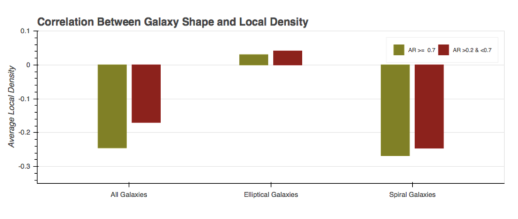by Jackson Novak

While working on our last project for the Citizen Science Ambassador project, there were many emotions, ranging from happiness, to sadness. Happiness from creating an amazing project and being able to share it with experienced people, and sadness because it was our last project together because the program was ending. I am proud of the work my group created and feel we did a great job presenting our project to a group of Adler professionals. We had much information to deal with and I think we did exceptionally well at being efficient with our work and communicating well with each other and our peers.
To begin, we explored data from a project called galaxy zoo, which allows anyone to classify the plethora of galaxies they have photographs of from the Sloan Digital Sky Survey. During the process of classifying the galaxies, the participator of the survey would look at the photograph and decide if the galaxy was a spiral galaxy or elliptical galaxy. While looking at this data, our team decided to focus on local density of the galaxy. This is how many nearby galaxies there are in a certain radius and the logged mass of the galaxy (which is the recorded mass of a galaxy). After we collected this data we filtered it to only show galaxies that were 80% certainly a spiral or elliptical. We put the rest of the galaxies into a neither column. Our research question was: Are ellipticals or spirals closer to other galaxies? The hypothesis was: Spiral galaxies are closer to other galaxies because they take up more space in between galaxies than ellipticals.
Important to realize, when dividing our work among each other, we learned about each of our interests and what subjects we were very strong in and could be the most efficient. I found myself taking on the role of collecting the data for everyone to sort through, while Victoria organized the presentation, and Liz categorized the data and created a color scheme for the slides. A problem we faced was making sure everyone was on the same page, because I missed a day when the rest of the team was collecting data so I had to catch up on the next day, which was a bit of a struggle.
In the long run, creating a beautiful presentation and being extremely thorough with our data were areas in which we exceled. Our time management could have been handled better, we found ourselves scrambling to finish the last slides right before we had to peer review. I thought that this project was a great learning experience because it taught me how to do many things, such as how to create a powerful presentation, collect data in an efficient way, organization, and staying focused while working hard.


